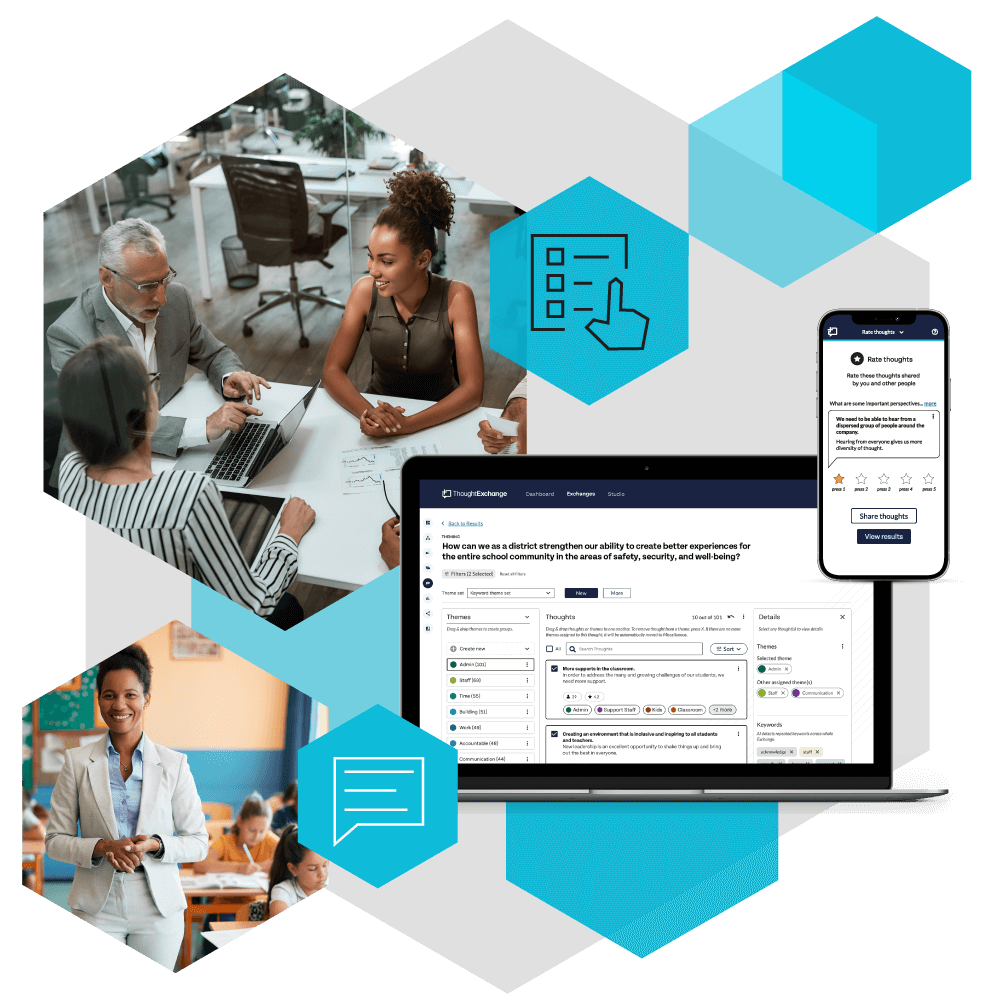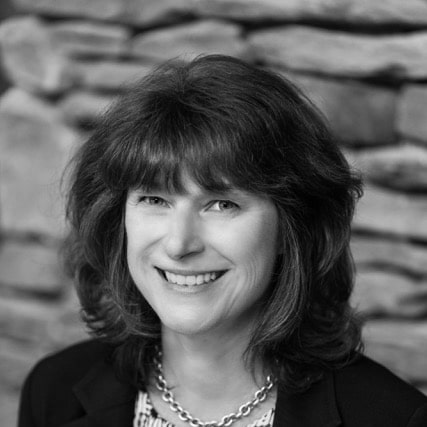Tap Into Student Voice to Enhance Your Mental Health Initiatives








Why Student Voice is Key to Your Mental Health Initiatives
Helping children build social-emotional skills that will set them up for success in school and life is a common goal for education leaders. Emotional intelligence isn’t just a key ingredient in our ability to respond to change and crisis; it’s also crucial for reducing bullying and risky behaviors, working with others, overcoming obstacles, and setting and achieving goals.
But the last few years have been tough for students and teachers—especially when it comes to mental health. And this is affecting students’ ability to learn as well as socialize. So how do you support your students’ diverse mental health needs?
Consider a collaborative approach—use student voice to tap into your students’ collective wisdom and help tackle their mental health challenges. Here’s why student voice is key to successful mental health initiatives.
See ThoughtExchange in Action — Explore the Product Tour
In this Article
Why is student voice important for mental health initiatives?
Developing effective ways to assess students’ mental health and programs to address their needs is more important than ever.
A recent State of Student Mental Health report reveals that student mental health has continued to decline lately. And this is affecting academic performance. In fact, 85 % of survey respondents “agree or strongly agree that students seem more stressed and anxious than in previous school years, a problem with far-reaching ramifications for students, schools, and communities.”
According to Education Week, kids’ mental health is also negatively impacting teachers, who are struggling to figure out how to respond.
In fact, more than half of teachers say that students’ declining mental health is stressing educators’ capacity to manage their classrooms. It may also be contributing to teachers’ own feelings about their work, as more than a third of educators say they are dissatisfied with their jobs. The U.S. Surgeon General called kids’ declining mental health the “defining public health crisis of our time.”
Education Week notes that some districts are prioritizing equity, student involvement, and student voice as key components of their mental health strategy. They’re on the right track—they understand that when the mental health solutions come from students’ peers, not just administrators, it’s much more powerful. And that when students see themselves in the solutions, they’re more willing to access them.
Student voice and choice in mental health programs
Students come from diverse backgrounds with diverse experiences and needs. This means that decisions made around supporting student mental health have to take a diverse range of perspectives into account and not just apply a one-size-fits-all approach.
Students need access to student voice and choice when it comes to their education as well as their mental health programs. Ensuring that your district has an accurate and agile picture of all your students’ needs is vital to their well-being and success.
Accessing student voice with technology
Determining what your students need and what will resonate with them can be a challenge. Trends change quickly in schools, and children and adolescents—especially from marginalized groups—can find it challenging to advocate for their needs in a public setting.
The right technology can help. Traditional feedback methods don’t make it easy to get to their honest thoughts. But with an engagement and survey platform like ThoughtExchange, leaders can accurately capture all the perspectives of an entire district’s students in an inclusive, anti-biased environment.
The platform allows leaders to cut back on the time and resources spent on town halls and meetings, and reach your district’s mental health initiative goals more efficiently and effectively.
Kids need a safe space to share in, one that assures them anonymity, allows them access to each other’s thoughts, and provides a platform where their peers can rate their ideas without bias. An Exchange is a perfect way to explore the topic of mental health with students to get meaningful feedback and relevant results.
With the right open-ended questions, you can get your students thinking critically about the supports they need to get the most value from their time in school.
By asking an open-ended question like, “What are some ways we can support safety and wellness for you and other students in your school?” administrators can discover the policies that students are finding most effective and the areas where their efforts are lacking.
Allowing students to weigh in on the decisions made on their behalf means that the district’s actions will have more support and be easier to implement. Students will feel heard, and leaders will get a prioritized list of their students’ needs.
Examples of student voice in the classroom
Student voice shapes African American studies course at Elgin School District U-46
Teresa Lance, Ed.D., Assistant Superintendent of Equity and Innovation,
Elgin Area School District 46, Illinois
Learners use student voice to advocate for mental health support at Guilderland CSD
Create more effective mental health initiatives with student voice
It may seem obvious that students should have input on their schools' decisions about their mental health. But more often than not, districts rely on adults’ expertise when it comes to developing social-emotional supports and learning for children and adolescents.
Re-imagining this process to include student input will ensure the programs put into place will get more support from students and be more effective in addressing their mental health and well-being needs.






